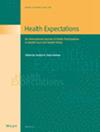Synergies, Discrepancies, and Action Priorities: A Statewide Engagement Study to Strengthen Clinical Research in Cerebral Palsy
Abstract
Background
Cerebral palsy (CP) clinical research is fraught with challenges, in part due to health-related disparities common among people with disabilities. Perspectives of people with lived experience of CP, clinicians and researchers vary on how to address these disparities. The present initiative explores synergies and discrepancies among stakeholders (n = 212) representing these partner groups in perceived barriers and facilitators to high-quality clinical CP research and robust trainee pathways. The overarching goal is to generate priority actions to empower meaningful partner group engagement in CP research and, ultimately, improve health outcomes for people with CP.
Methods
Grounded in empowerment theory, mixed methods needs assessments were conducted separately with partner groups to capture perspectives on barriers and facilitators to high-quality CP research and strong trainee pathways. Thematic analysis was applied to focus groups and interviews to identify themes and subthemes.
Results
Discrepancies among partner groups emerged related to informational needs, community connection, ethical research and equitable representation in research, and fair compensation for lived experience partner engagement in the research process.
Conclusions
Ongoing opportunities for researcher action to empower partner group engagement include building shared purpose, nurturing social connection within and among groups and intentional efforts to build trust and codesign studies.
Patient or Public Contribution
The initiative described here was informed by caregivers of children with CP from Georgia, USA, using a community-based participatory research (CBPR) approach. CPBR is a collaborative approach, designed to give communities, which here include people with lived experience of CP, control over research processes and outcomes. Their perspectives were essential to the premise of this study and guided data interpretation, especially with regard to how their perspectives may or may not correspond to those of CP researchers and clinicians. To ensure inclusion of all perspectives, individuals with CP were also represented in these latter two engagement groups. Finally, the design, conduct, analysis and interpretation of data were informed by a researcher and a clinician-scientist, both of whom have lived experience as caregivers of children with CP.


 求助内容:
求助内容: 应助结果提醒方式:
应助结果提醒方式:


